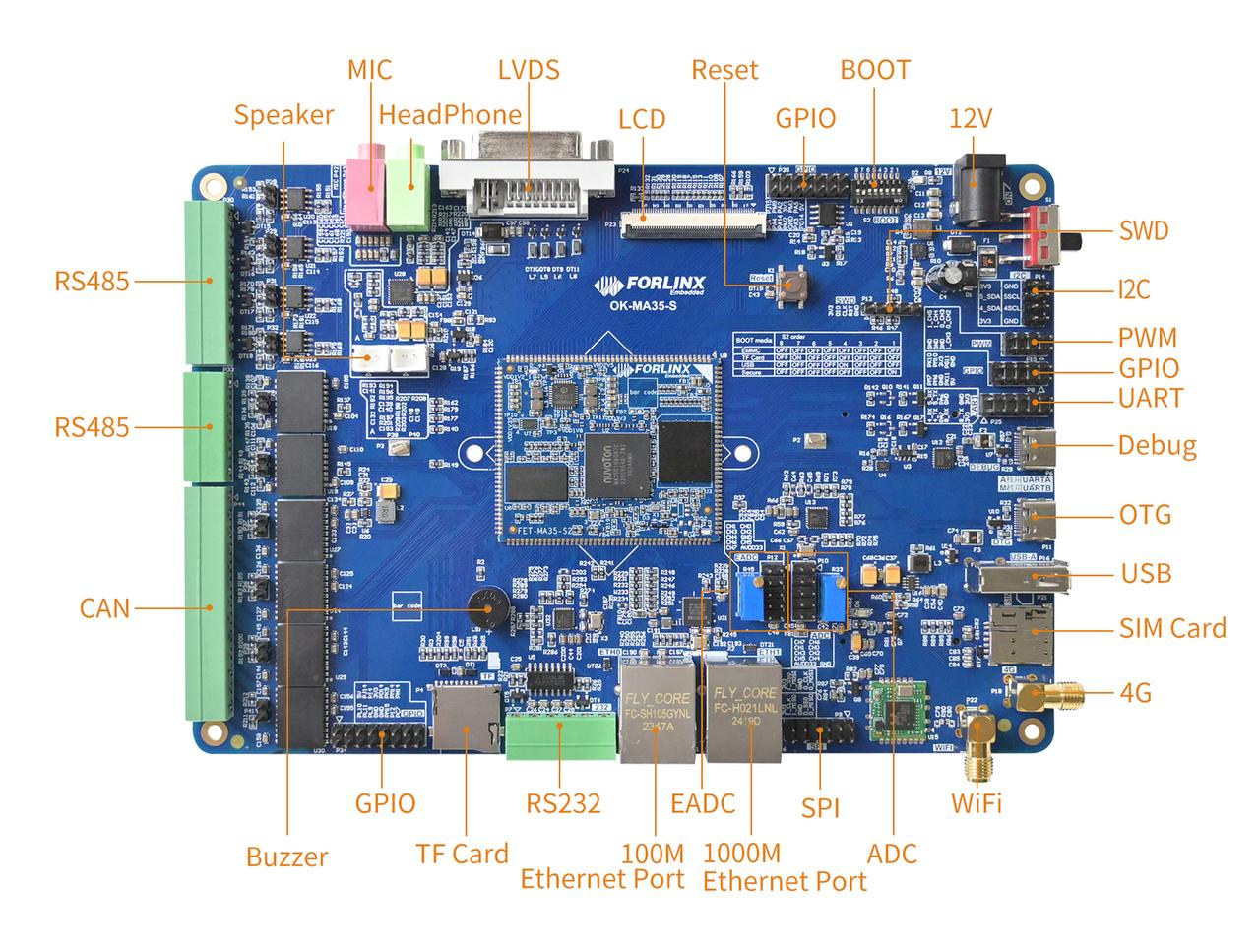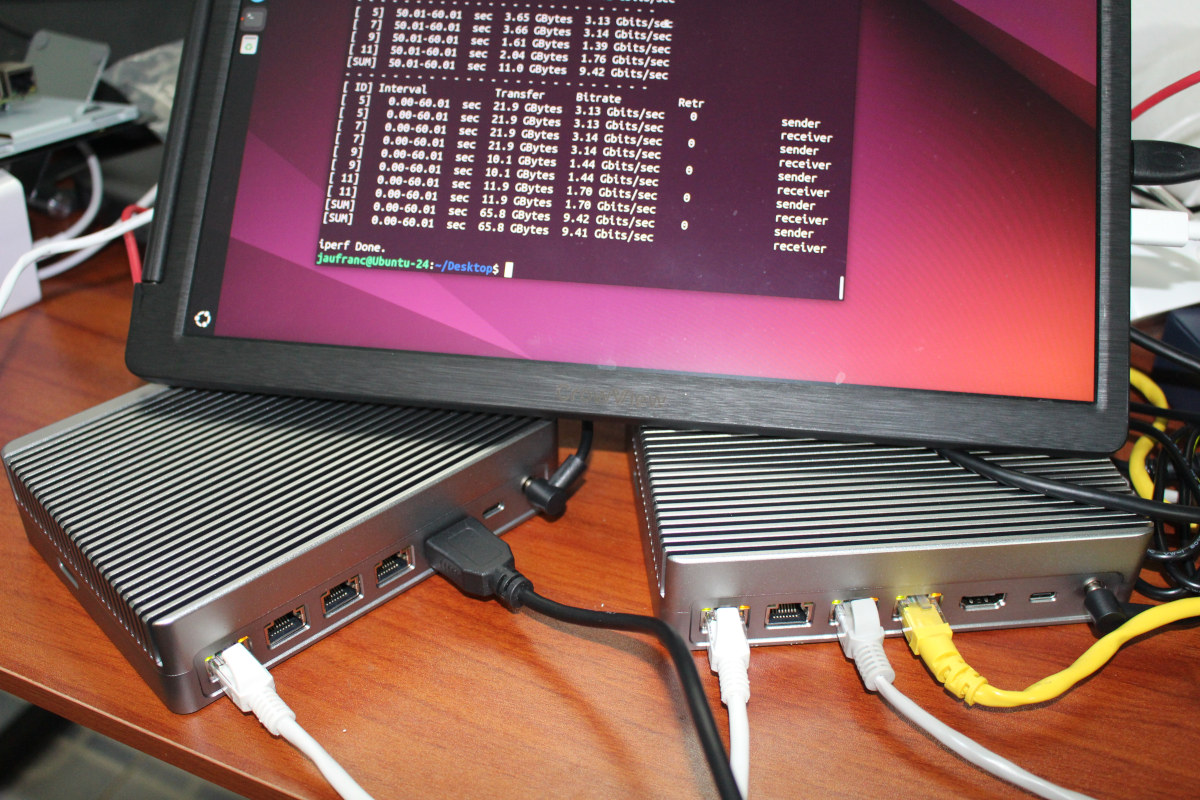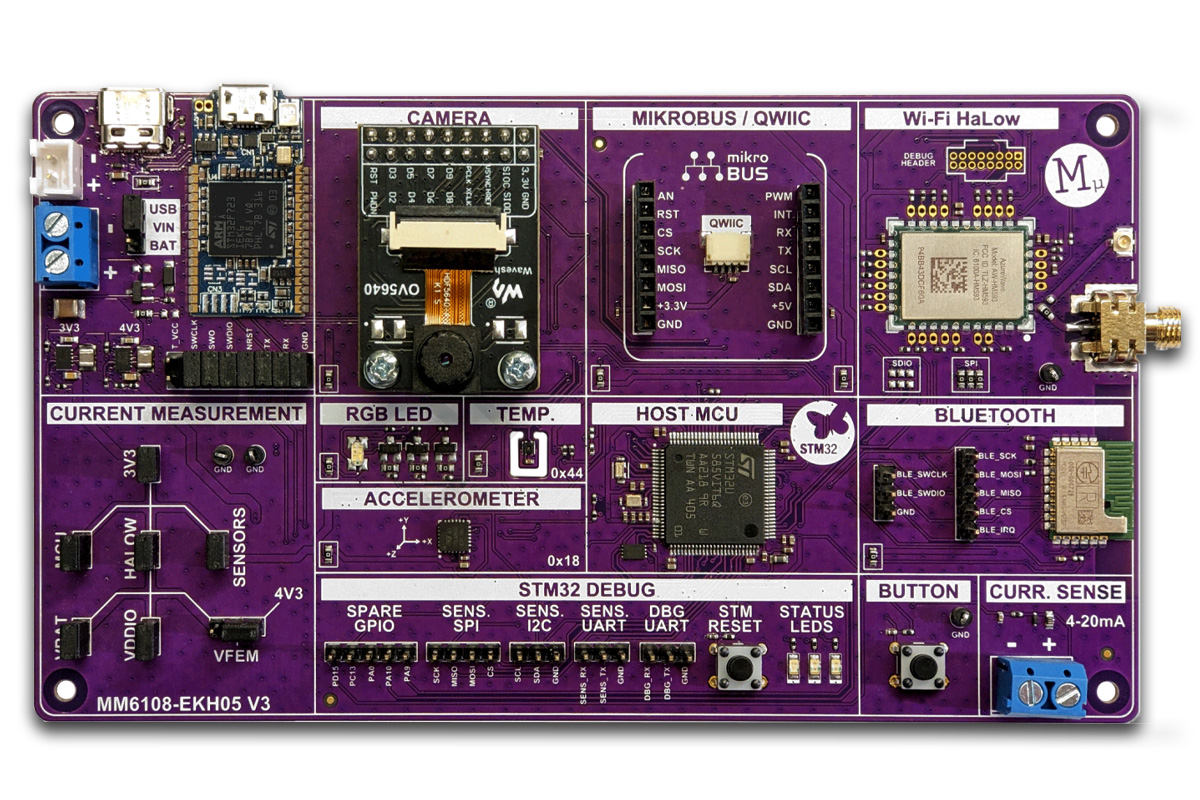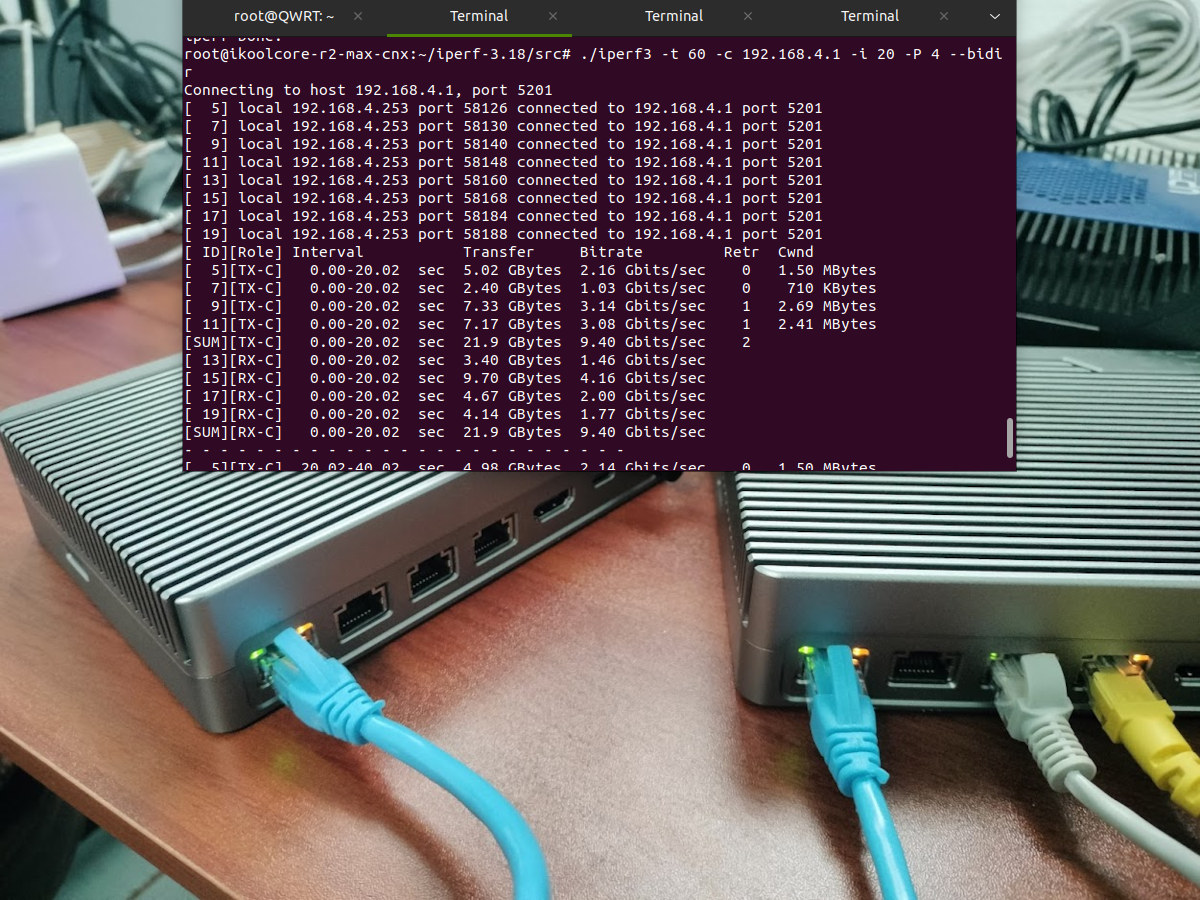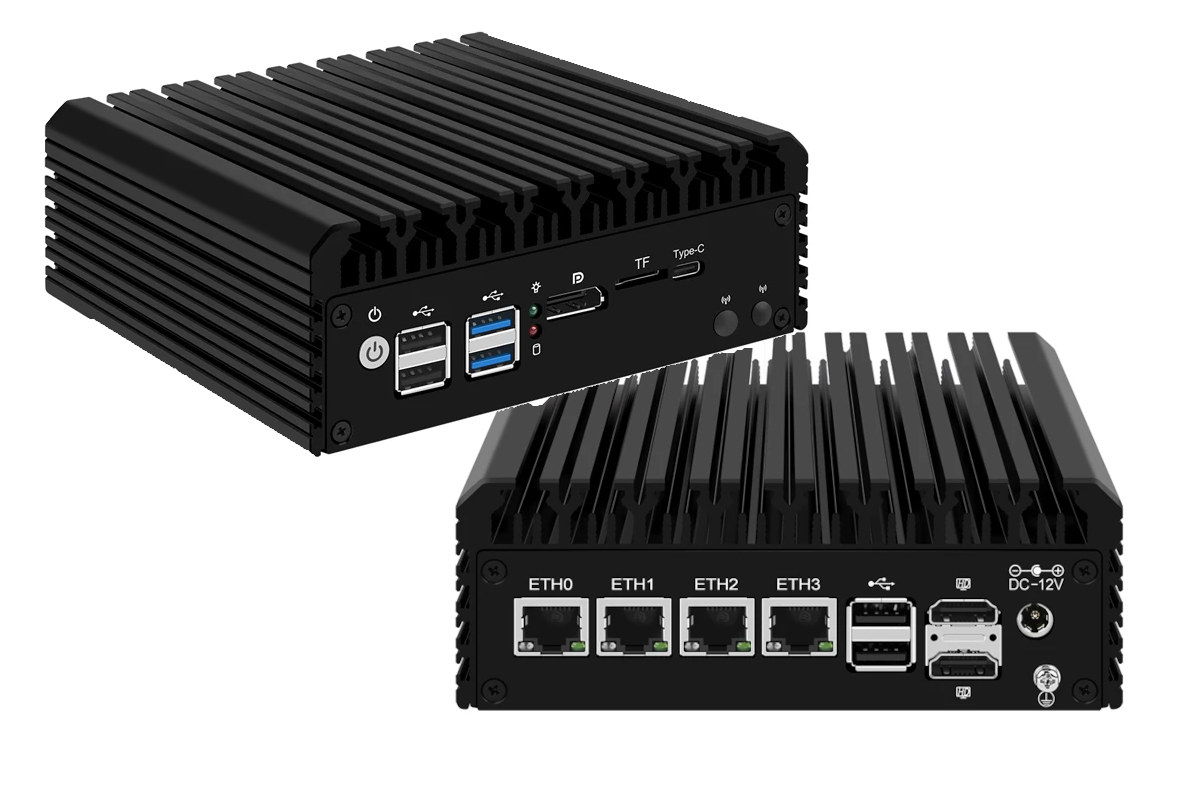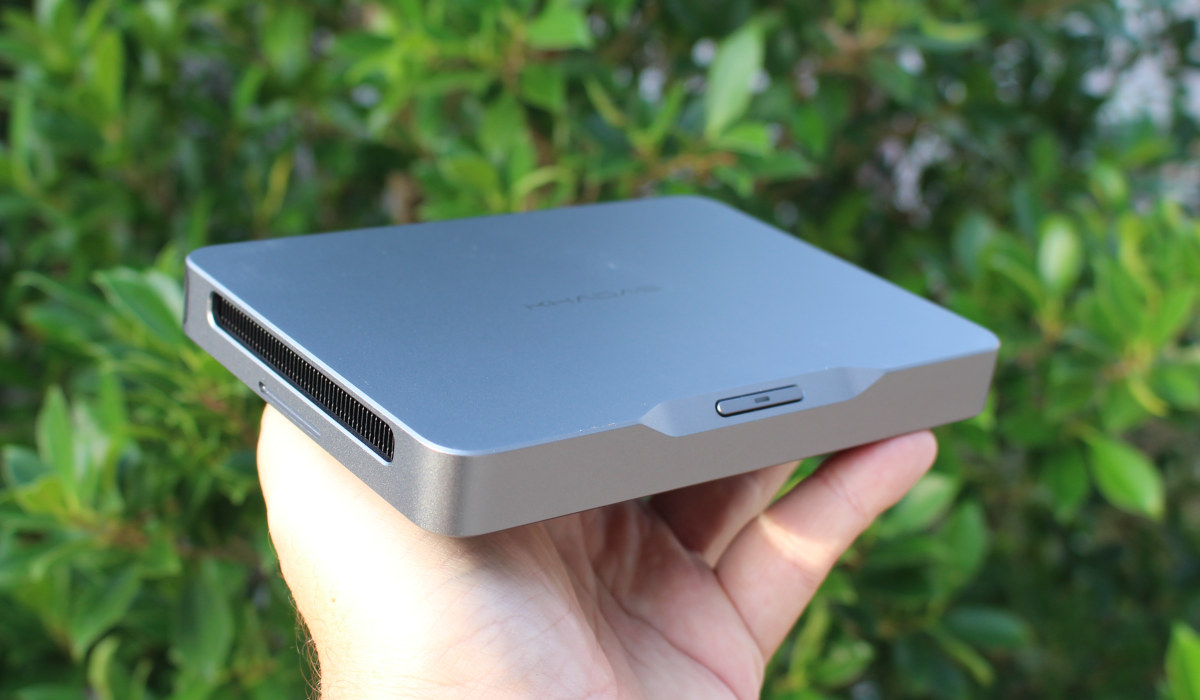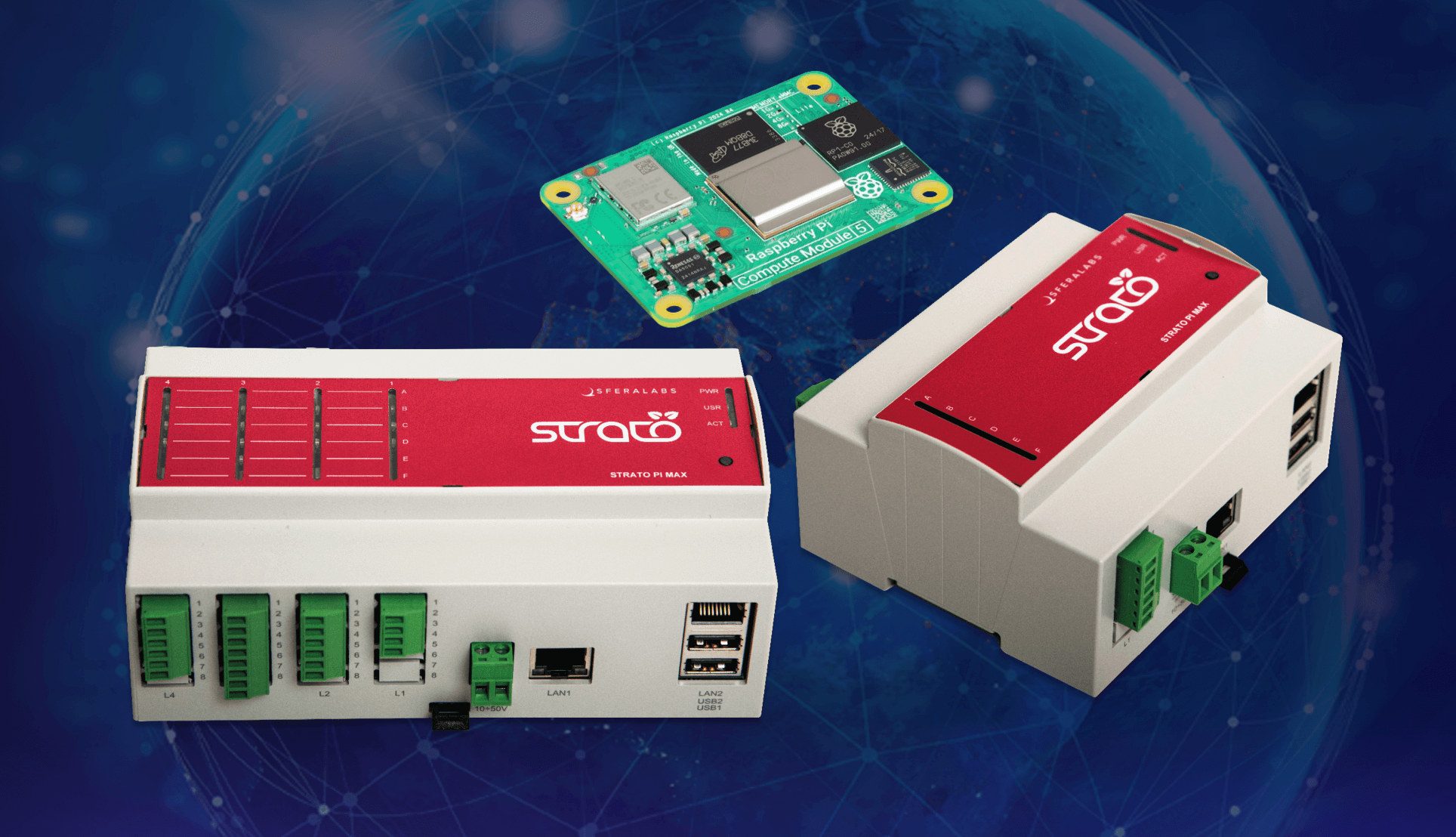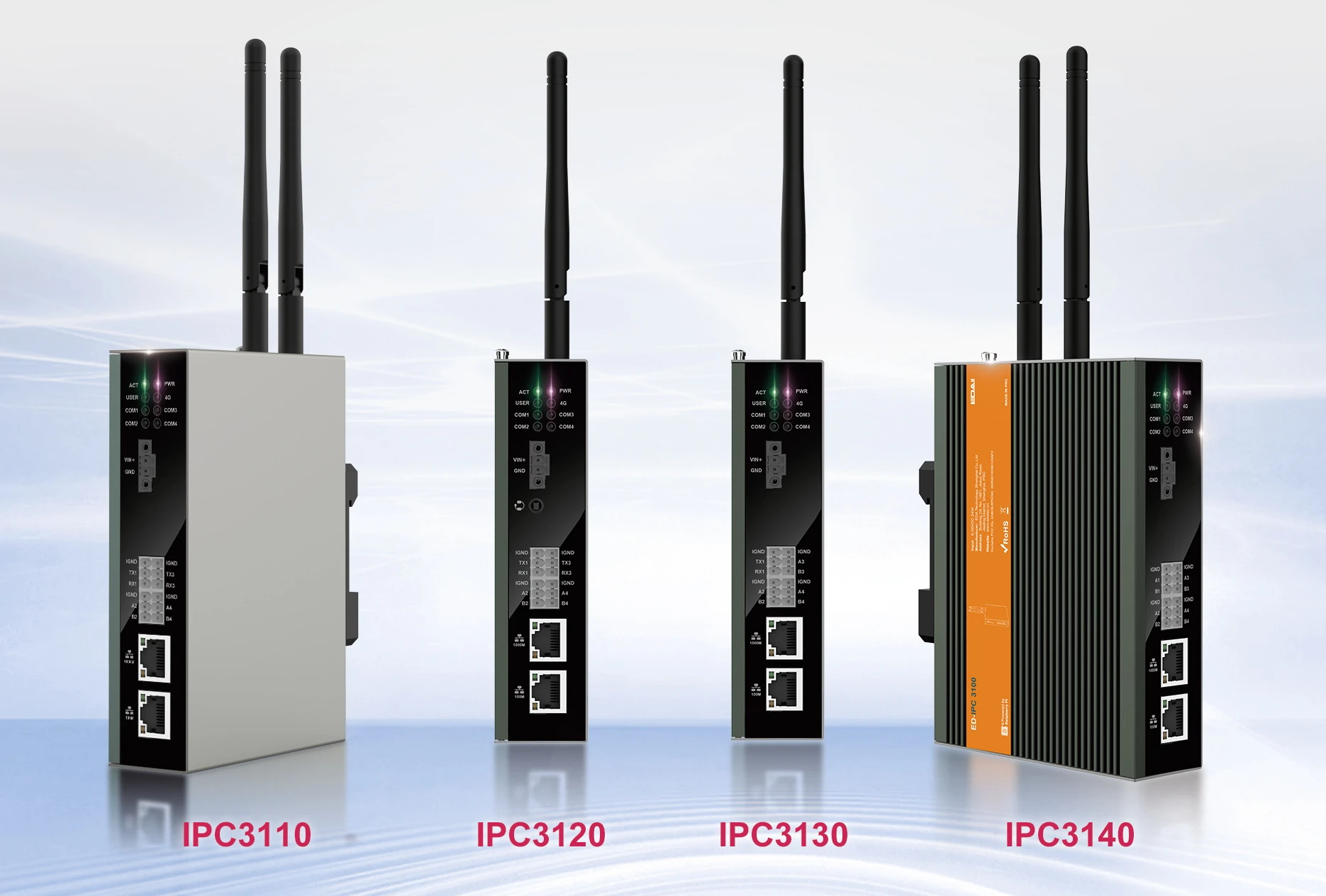Forlinx Embedded OK-MA35-S21 SBC is based on the company’s FET-MA35-S2 SoM powered by a Nuvoton Numicro MA35D1 Arm Cortex-A35/M4F microprocessor, and offered with up to 1GB RAM and an 8GB eMMC flash. Designed for applications such as charging piles, HMI, industrial control, medical equipment, new energy, edge gateways, smart buildings, and smart agriculture, the MA35D1 SoM supports dual Gigabit Ethernet, CAN FD, up to 17x UART, 16x analog input, etc.. and the SBC further integrates RS485 and RS232 terminal blocks, WiFi and Bluetooth, and optional 4G LTE connectivity Forlinx FET-MA35-S2 SoM Specifications: SoC – Nuvoton NuMicro MA35D1 CPU 2x Arm Cortex-A35 cores at up to 800 MHz Arm Cortex-M4 processor core at up to 180 MHz GPU – 2D Graphic Engine (GFX) VPU – H.264 video decoder up to 1920×1080 @ 45 Hz; JPEG Image Decoder System Memory – 512MB/1GB DDR3L Storage – 8GB eMMC flash Carrier board interfaces – […]
iKOOLCORE R2 Max review – Part 2: 10GbE on an Intel N100 mini PC with OpenWrt (QWRT), Proxmox VE, Ubuntu 24.04 and pfSense 2.7.2
I’ve already checked out iKOOLCORE R2 Max hardware in the first part of the review with an unboxing and a teardown of the Intel N100 system with two 10GbE ports and two 2.5GbE ports. I’ve now had more time to test it with an OpenWrt fork, Proxmox VE, Ubuntu 24.04, and pfSense, so I’ll report my experience in the second and final part of the review. As a reminder, since I didn’t have any 10GbE gear so far, iKOOLCORE sent me two R2 Max devices, a fanless model and an actively-cooled model. I was told the fanless one was based on Intel N100 SoC, and the actively-cooled one was powered by an Intel Core i3-N305 CPU, but I ended up with two Intel N100 devices. The fanless model will be an OpenWrt 23.05 (QWRT) server, and the actively cooled variant be the device under test/client with Proxmox VE 8.3 server […]
STM32-powered MM6108-EKH05 Wi-Fi HaLow evaluation kit supports Bluetooth, Camera, and Qwicc/MikroBus modules
Morse Micro has recently launched the MM6108-EKH05 Wi-Fi HaLow Evaluation Kit designed to reduce the development and deployment time of IoT products. Built around the Morse Micro MM6108 HaLow SoC, this kit combines long-range, low-power wireless connectivity with a range of integrated sensors, making it ideal for IoT engineers and developers. Key features include Wi-Fi HaLow connectivity, an STM32U585 Cortex-M33 MCU, integrated sensors (temperature, humidity, accelerometer), 16 MB of SPI Flash memory, programmable GPIOs, power measurement tools, and WPA3 security for reliable and secure communication. The kit also includes alternative power options including USB, battery, or external power, and embeds support for a camera, MikroBus and Qwicc expansion modules, Bluetooth, and current measurement circuitry. All these features make this kit useful for applications including smart homes, industrial automation, and agricultural monitoring. MM6108-EKH05 specifications: MCU – STM32U585 Arm Cortex-M33 microcontroller @ 160 MHz with TrustZone, 2 MB Flash Storage – 16Mbit […]
How to use iperf3 in multi-thread mode for 10Gps+ Ethernet testing
With 10GbE becoming more widespread and often found in entry-level hardware, the CPU may become the bottleneck, so I’ll explain how to use iperf3 in multi-thread mode to fully saturate the 10GbE bandwidth even with a system based on a relatively low-end multi-core processor.
For this tutorial, I use two iKOOCORE R2 Max mini PCs with two 10GbE interfaces each and an Intel N100 quad-core processor running an OpenWrt fork (QWRT) and Proxmox VE (Debian) respectively. I will show how I can fully saturate the 10GbE interfaces using multithreading, but not with a typical iperf3 single-core test.
HUNSN RJ42 and RJ43 Intel N150 fanless network appliances and mini PCs come with four 2.5GbE ports, four video outputs
We’ve previously seen the new Intel N150 “Twin Lake” processor in mini PCs such as Beelink EQ14 and ASUS NUC 14 Essential among others, but the new quad-core CPU is now also found in HUNSN RJ42 and RJ43 fanless network appliances with four 2.5GbE RJ45 ports. They also double as mini PCs with multiple video outputs and USB ports. The mini PCs ship with up to 32GB RAM and 512GB of storage, support four independent displays through HDMI, DisplayPort, and USB-C interfaces, and offer five USB Type-A ports for expansion. The HUNSN RJ42 and RJ43 offer a similar set of features as previous Intel N100 network appliances with 2.5GbE ports such as the iKOOLCORE R2 and INCTEL N100, but with a slightly faster Intel N150 “Alder Lake-N Refresh” or “Twin Lake” processor thanks to higher clock speeds, and extra interfaces. HUNSN RJ42/RJ43 specifications: SoC – Intel Processor N150 quad-core “Twin […]
Khadas Mind 2 AI Maker Kit – An Intel Core Ultra 7 258V “Lunar Lake” mini PC for developers
Khadas recently announced the Mind 2 mini PC with an Intel Core 5 or 7 “Meteor Lake” mini PC. But the company is prepping the launch of another similar device called the “Khadas Mind 2 AI Maker Kit Dev Workstation” or “Intel Core Ultra Processor (Series 2) AI PC Dev Kit” with a 15th Gen Intel Core Ultra 7 258V “Lunar Lake” processor offering up to 115 TOPS of AI performance. I’ll just call it “Khadas Mind 2 AI Maker Kit” for shorts. The system ships with 32GB RAM and a 1TB SSD, and Khadas says the new system is designed specifically for developers working on AI PC applications, but apart from the faster SoC, it comes with similar features as the Mind 2. This includes HDMI 2.0 video output, two 40Gbps USB4 ports, Wi-Fi 6E (802.11ax), and Bluetooth 5.3 connectivity, as well as two USB 3.2 Gen2 Type-A ports […]
Sfera Labs Strato Pi Max DIN rail industrial controllers now support the Raspberry Pi Compute Module 5
The Raspberry Pi Compute Module 5 (CM5) was launched at the end of last month, and we are starting to see companies slowly announce upgraded CM4 designs. Yesterday, we wrote about EDATEC ED-IPC3100 DIN-Rail mountable industrial computers, and today, we’ll cover Sfera Labs’ addition of the Raspberry Pi Compute Module 5 to their Strato Pi Max DIN rail industrial controllers. The controllers still feature a gigabit Ethernet port, a 10/100M Ethernet port, two USB 2.0 ports, a Raspberry Pi RP2040 microcontroller for power management and boot sequence control, and support expansion modules for up to sixteen RS-485 or RS-422 ports, four CAN V2.0B ports, digital and analog I/O, and more. Strato Pi Max specifications (as of December 2024): Base Module Raspberry Pi Compute Module 5 Raspberry Pi Compute Module 4 Zymbit SCM options. Microcontroller – Raspberry RP2040 dual ARM Cortex-M0+ at 133 MHz. Storage – eMMC, microSD (dual for XL), M.2 PCIe […]
EDATEC ED-IPC3100 Raspberry Pi CM5-based industrial computers offers RS232/RS485, dual Ethernet, 4G LTE, and more
EDATEC ED-IPC3100 is a range of four DIN-Rail mountable industrial computers based on the new Raspberry Pi CM5 (Compute Module 5) with two Ethernet ports, and various RS232 or RS485 COM port options depending on the selected model. The ED-IPC3100 computers are offered with the CM5 with up to 16GB LPDDR5, 64GB eMMC flash, and optional WiFI 5 and Bluetooth 5. All also feature one HDMI port, two USB 2.0 ports, 9V to 36V DC input, and the EDC-IPC3120 model also adds a 3.5mm audio jack and internal connectors for a speaker, MIPI DSI and HDMI video output interfaces, and a MIPI CSI camera. EDATEC ED-IPC3100 specifications: SoM – Raspberry Pi CM5 SoC – Broadcom BCM2712 quad-core Cortex-A76 processor @ 2.4GHz with VideoCore VII GPU System Memory – 2GB, 4GB, 8GB, or 16GB LPDDR4-4267 SDRAM Storage – Options for 16GB, 32GB, or 64GB eMMC flash Wireless – Optional dual-band WiFi […]


